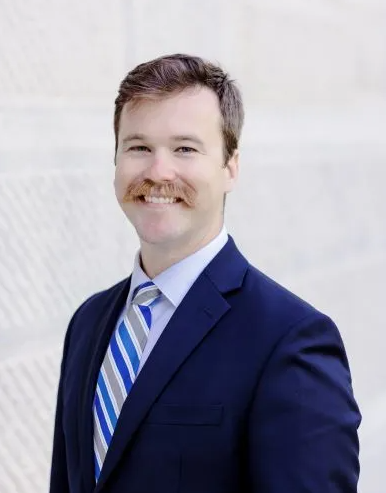By Zach Bjur, Conservation Voters of South Carolina
April 2, 2024
| Introduce yourself! Tell us a little about you. How did you get started in your advocacy? |
|---|
| My name is Zach Bjur and I am the Land, Water, Ocean Project Manager for Conservation Voters of South Carolina. I’ve been interested in politics and the process of government from an early age, and I’ve always been an avid amateur naturalist. In school I pursued both passions and got degrees in Political Science and Biology. My first job out of college was with Organizing for America working on President Obama’s 2012 campaign. After the election, I worked at the South Carolina Aquarium and the South Carolina Department of Natural Resources. Both positions focused on public outreach and education about our natural resources, educating people to inform their own advocacy. Then, in 2019, I co founded a multimedia project called Apparent Winds that highlighted local climate change and marine science research and advocacy efforts in communities around the world. When the COVID pandemic changed the course of that project, I came home to SC and focused my efforts on environmental advocacy at the state level via my position with Conservation Voters of South Carolina. |
| What is your area of expertise and what are you knowledgeable about specifically? Aka tell us what your superpower is and why people should listen to your advice! |
|---|
| My background is in grassroots organizing and community outreach and education, both in the political sphere and the sciences. I have been doing this work for nearly 10 years and the foundation of all of it is building trust. Relationships are built on trust and trust can only be fostered through meaningful time spent with community, listening, and empowering others. |
| What kind of historic preservation projects have you worked on? |
|---|
One of our most exciting projects at CVSC is our Rosenwald Schools Protection Network initiative. We learned about Rosenwald Schools as we attempted to identify non-traditional conservation targets that could broaden the impact of land protection in our state. These schools and the land they sit on are often still in the heart of rural and under resourced communities they once served. These sites are increasingly under development pressure which threatens the stories they hold. Protecting these sites not only promotes public greenspace access, it supports historic preservation and community revitalization in these underserved communities around the state. |
| How does your work in advocacy intersect with preserving Black historic spaces? |
|---|
| At CVSC we believe all land tells a story and we want to be cognizant of which stories we’re protecting with our land protection advocacy efforts. Black historic spaces have been long overlooked by conservation advocacy efforts and we are intent on changing that narrative. We want land and historic sites that are important to the Black community to be prioritized in state advocacy work so that the protected lands in our state reflect the diverse interests of all South Carolinians. |
| What do African American preservation projects need to know about advocacy? |
|---|
| Building coalitions that weave together diverse stakeholders is the best way to build enduring projects. Preserving African American history has potential benefits for historic preservation, conservation, economic development, tourism, and more. Identifying those benefits and clearly communicating them paves the way for partnerships across sectors which in turn strengthens advocacy efforts. |
| What do people need to know about advocacy? (how do you get political actors to listen to you?) |
|---|
| Advocacy comes down to storytelling. How can you present your movement in a way that connects with people? Political actors are people just like you and me, and unless you can build that personal connection that gives them a reason to be invested, you won’t get far. Understanding how your project connects to people is key. What are the impacts? What is the legacy? Why should people care? |
| If someone asked for your advice on the first step they should take in advocating for their historic preservation project – what would you say? |
|---|
| Relationship building is the foundation for any advocacy effort. Relationships with state and local officials, non-profits, and community advocates are all necessary for a successful project. Strong partnerships increase capacity and impact. By seeking out and embracing non-traditional partnerships that complement your team’s strengths and weaknesses you can multiply your efforts and find greater success. |
| What steps would you recommend for people who are not a professional or expert in advocacy work? |
|---|
| First off, trust yourself. The best advocates are the people closest to the issue who can speak passionately about their project. Decision makers at all levels of government are meant to respond to the needs of their constituents so don’t be bashful when getting your message to them. That being said, it can be intimidating to step into unfamiliar spaces, so find partners and organizations who know how to operate in these spaces to help you hone your message and amplify your voice. |
| What is the single most important or impactful thing you can do in advocacy? |
|---|
| Being authentic is the most powerful tool in an advocate’s tool box. Whatever has driven you to work on a project – share that. Share your passion, it is contagious. When an advocate comes from a place of authenticity, not only can it help build your coalition it magnifies the impact of your message to those that need to hear it. |
| Additional insight or advice …? |
|---|
| CVSC has been advocating at the state level for 20 years. We strive to be a trusted resource for advocacy at the Statehouse and have built strong relationships with our state decision-makers. If you have a project that you think we could partner on, please reach out! |

